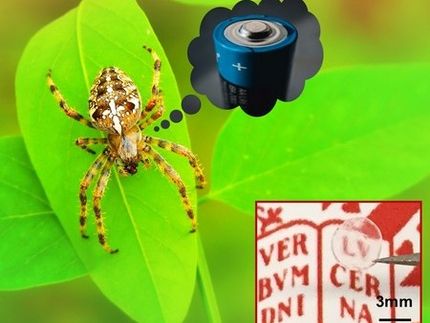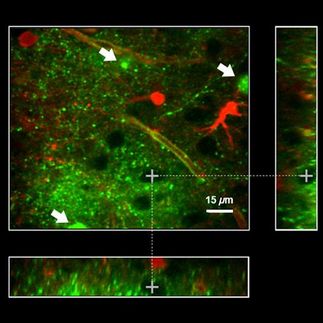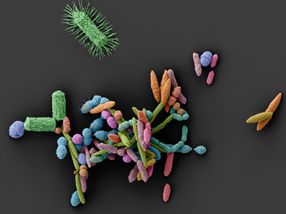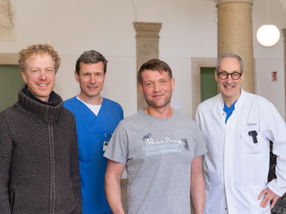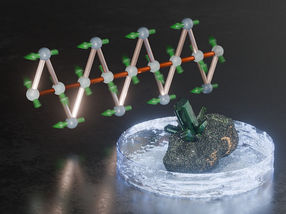To hear a pitter patter from afar
Catching heartbeats with millimeter-wave radar
Heartbeats can now be measured without placing sensors on the body, thanks to a new technology developed in Japan. Researchers at the Kyoto University Center of Innovation, together with Panasonic Corp, have come up with a way to measure heartbeats remotely, in real time, and under controlled conditions with as much accuracy as electrocardiographs.
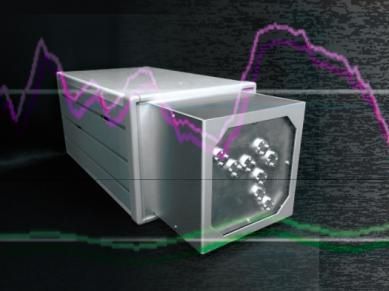
Japanese researchers have come up with a way to measure heartbeats remotely, in real time, and under controlled conditions with as much accuracy as electrocardiographs. The technology utilizes spread-spectrum radar to catch signals from the body and an algorithm that distinguishes heartbeats from other signals.
Kyoto University
The researchers say this will allow for the development of "casual sensing" -- taking measurements as people go about their daily activities, for instance, when they are going to bed or getting ready to start the day.
"Taking measurements with sensors on the body can be stressful and troublesome, because you have to stop what you're doing," says Hiroyuki Sakai, a researcher at Panasonic. "What we tried to make was something that would offer people a way to monitor their body in a casual and relaxed environment."
The added convenience of remote sensing, the team believes, will be an incentive for people to monitor their health status for their own benefit.
The remote sensing system combines millimeter-wave spread-spectrum radar technology and a unique signal analysis algorithm that identify signals from the body.
"Heartbeats aren't the only signals the radar catches. The body sends out all sorts of signals at once, including breathing and body movement. It's a chaotic soup of information," says Toru Sato, professor of communications and computer engineering at Kyoto University. "Our algorithm differentiates all of that. It extracts waves characteristic of heart beats from the radar signal and calculates their intervals."
The team hopes that the remote sensing system, with further experimentation, will be put to practical use in the near future.
"Now that we know that remote sensing is possible, we'll need to make the measurement ability more robust so that the system can monitor subjects in various age ranges and in many different contexts," Sato concluded.
Most read news
Other news from the department science
These products might interest you
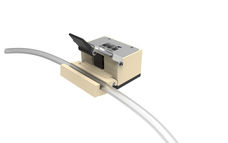
Hose pressure transducer by HiTec Zang
Contactless pressure measurement for sterile applications
Easy-to-install tubing pressure sensors for diameters from 4.8-19.1 mm

FireSting-PRO by PyroScience
New fiber optic measuring device: Precise measurements even in the smallest volumes
Measure pH, oxygen and temperature even under sterile conditions

Get the life science industry in your inbox
By submitting this form you agree that LUMITOS AG will send you the newsletter(s) selected above by email. Your data will not be passed on to third parties. Your data will be stored and processed in accordance with our data protection regulations. LUMITOS may contact you by email for the purpose of advertising or market and opinion surveys. You can revoke your consent at any time without giving reasons to LUMITOS AG, Ernst-Augustin-Str. 2, 12489 Berlin, Germany or by e-mail at revoke@lumitos.com with effect for the future. In addition, each email contains a link to unsubscribe from the corresponding newsletter.
More news from our other portals
Last viewed contents
Reproductive_health
Actavis divests its distribution business in Bulgaria
John_Dix_Fisher
Echis_megalocephalus
Organon Involved in Unique Initiative for the Development and Production of Biopharmaceutical Medicines

Soil bacteria as biocatalysts - Researchers have clarified the molecular structure of an enzyme class, enabling them to use bacteria to produce prodrugs
Galapagos and Arthrogen enter target discovery alliance

Time-switch for immune cells
Canadian_Deaf_Theatre
MorphoSys Signs Manufacturing Agreement with Boehringer Ingelheim
Orange_G

